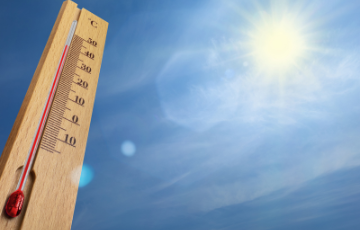Find Current Beach Advisories
Find Beach Sample Results
Environmental Health Officers assist local government and beach owners to monitor beach water quality at popular beach sites throughout the swimming season.
Swimming in contaminated water can result in increased risk of illness. Recreational water may become contaminated from various sources including wildlife, storm water discharges, sewage or other human activity. The sampling program allows the public to make informed decisions when participating in recreational water activities.
The beach sampling program is active each year between mid-May to September. Beach owners and operators are responsible for beach water sampling and maintain a safe environment for public beach use. Where results may indicate the water may be unsafe, beach advisories will be posted by local government or beach owners at the beach site in consultation with Island Health.
Frequently Asked Questions
- Why monitor beaches?
-
Beaches are monitored to protect swimmers from illnesses that may be linked to unacceptable levels of bacteria. Swimming in contaminated water can result in increased risk of ear, nose and throat infections or gastrointestinal illnesses.
- How are beaches chosen for sampling?
-
Local government or beach owners may request participation in the beach sampling program. Environmental Health Officers will assess beaches to determine if regular sampling is warranted based on usage levels and the type of activities. The beach sampling program focuses on primary contact activities where there is increased risk for ingesting recreational water such as swimming.
- How often are beaches sampled?
-
Environmental Health Officers assess beaches using a risk assessment tool based on usage, previous sample results and potential sources of contamination. Based on the assessment, the sampling frequency recommended are as follows:
HIGH – Sampled weekly
MODERATE – Sampled every two weeks
LOW – Sampled monthly
- What do we test for?
-
We test for indicator bacteria. Indicator bacteria are used to identify the presence of fecal contamination and provide an indication of the potential risk associated with swimming in that location. The indicator bacteria used depends on the type of water sampled. E. coli is used at fresh water beaches and Enterococci is used at salt water beaches.
The standards applied are based on the Health Canada Guidelines.
- Where can I find beach sample results
-
Find Beach Sample Results
Beaches may be found using the search functions or filtering by municipality. If results are not available, this may indicate beach samples have not been collected or the beach is not participating in the beach sampling program. Contact the local government or beach owner for more information.
- When are advisories posted on beaches?
-
Beach advisories are recommended by Island Health when there is an elevated risk associated with bacterial levels. A beach advisory may be recommended when:
- the average of the past several sample results (geometric mean) exceeds 200 E.coli or 35 Enterococci.
- a single sample result exceeds 400 E. coli or 70 Enterococci per sample
- a visible blue green algae bloom is present
- other public health hazards are identified
These recommended standards are based on Health Canada Guidelines.
Environmental Health Officers will contact the local government or agency overseeing the beach to re-sample and/or post a warning sign at the beach if a beach advisory is needed. Please note, public beach are not technically “closed” to public access while an advisory is in place.
- What is a beach action value?
-
Beach Action Value (BAVs) was introduced in the 2023 Health Canada Guidelines. Exceedance of the BAV does not pose an immediate health risk but informs beach owners that water quality has been impacted by environmental factors and further investigation may be needed to identify the source as a proactive approach. Re-sampling may be recommended by the Environmental Health Officers
- When are beach advisories lifted?
-
Beach advisories are lifted once there is no longer a risk to swimmers. A beach advisory may be lifted when:
- the average of the past several sample results (geometric mean) falls below 200 E. coli or 35 Enterococci
- two consecutive sample results are below the single-sample maximum (400 E. coli or 70 Enterococci)
- the blue green algae bloom is no longer visible
- any possible public health hazard identified has been abated
- What is Blue-Green Algae?
-
Cyanobacteria (also known as blue-green algae) are microscopic organisms that are naturally found in water, more commonly, in shallow, slow moving water such as ponds or fresh water lakes. Cyanobacteria is typically not visible in water but under the right conditions, may form blooms that can be seen on the surface of water appearing as a sheen or can be a thicker consistency and range in colours from green, blue, red or brown.
Cyanobacteria can produce toxins (microcystins) that are poisonous to humans, pets and other animals. Not all algae blooms are caused by cyanobacteria. Other types of algae may also form visible blooms that may or may not be harmful.
It is recommended to avoid drinking, swimming or any direct contact with the water during an active bloom. Beach advisories are posted where there is a visible bloom on this page.
Resources:
Cyanobacteria Bloom (Blue Green Algae)
Province of BC Algae Watch
- Tips for safe beach use
-
- Check for beach advisories and beach sampling results page before swimming. Note: Beach results are most predictive of water quality for two days after a sample was taken.
- Avoid swimming after heavy rainfall or where water appears murky or turbid.
- Avoid swallowing water.
- Avoid swimming if you have open cuts or wounds, or if you are experiencing gastrointestinal illness.
- Take a shower as soon as possible after being exposed to beach water.
- Always wash your hands prior to consuming food.
Recreational water facilities
Please note the water recreational facilities information is now found on this page.




